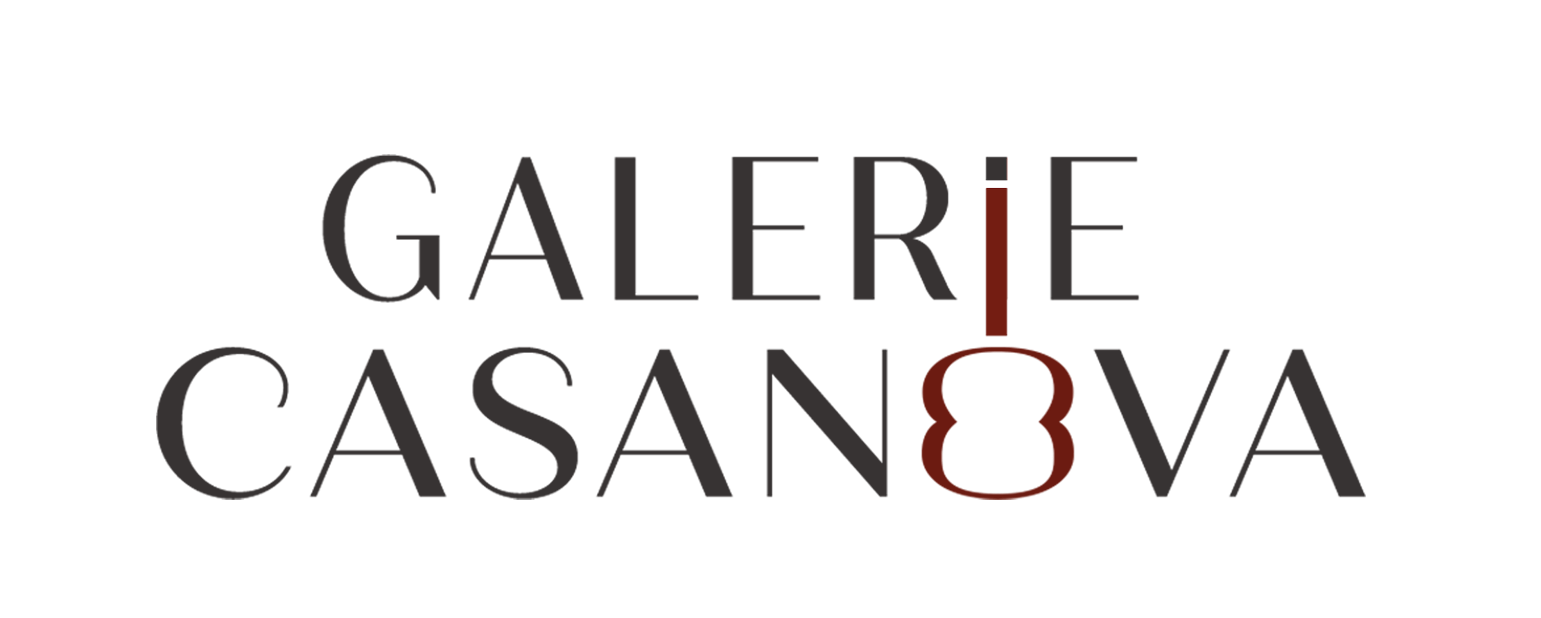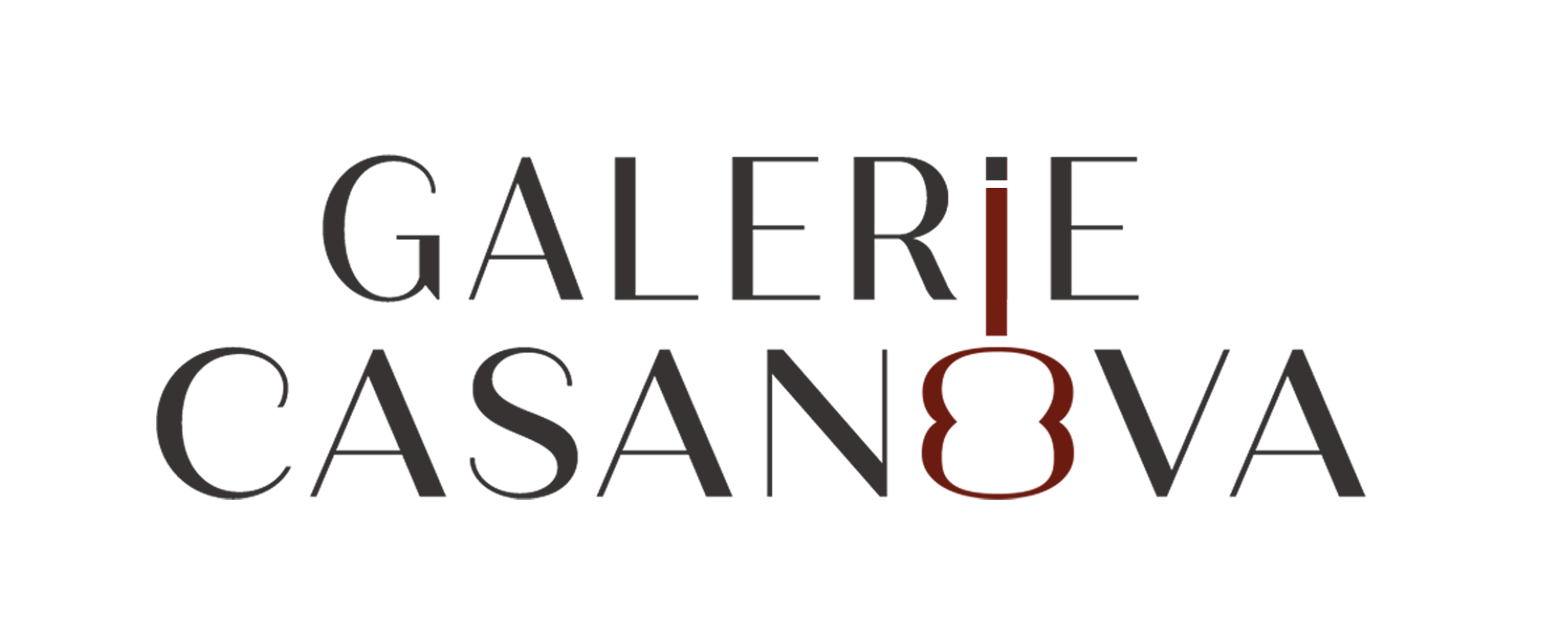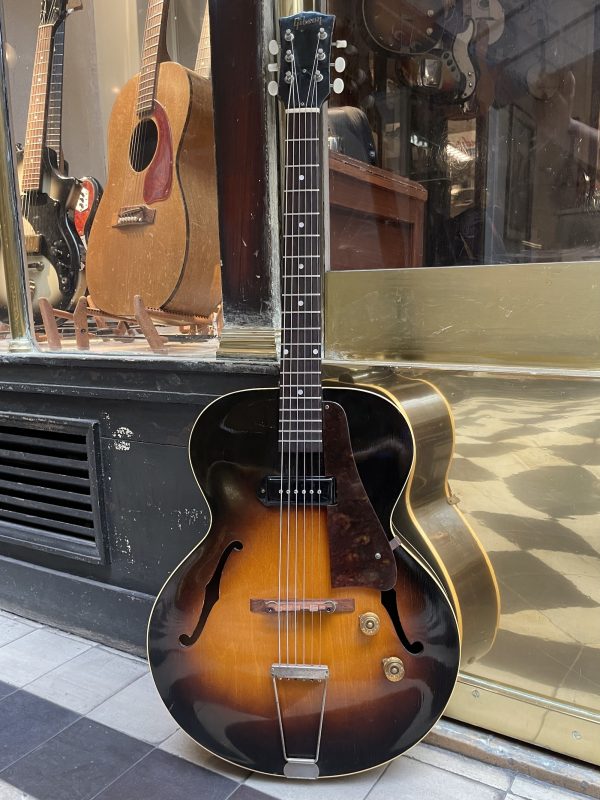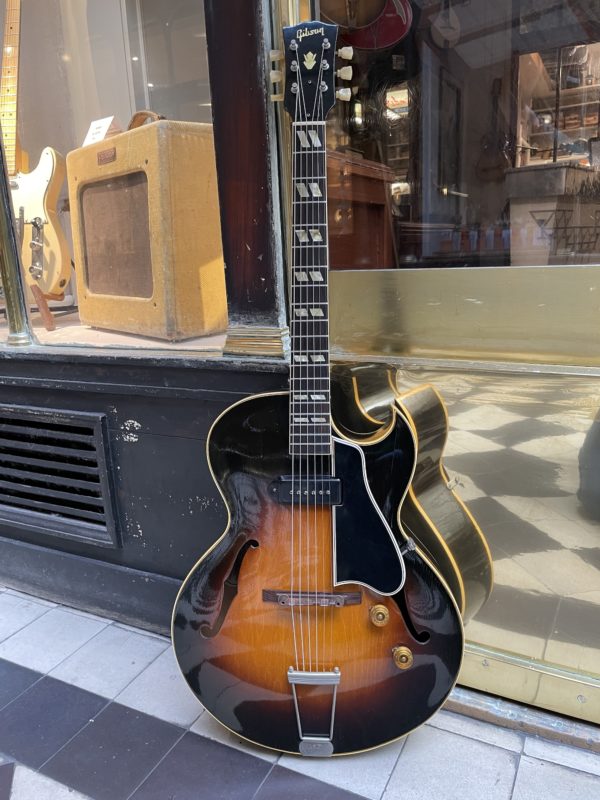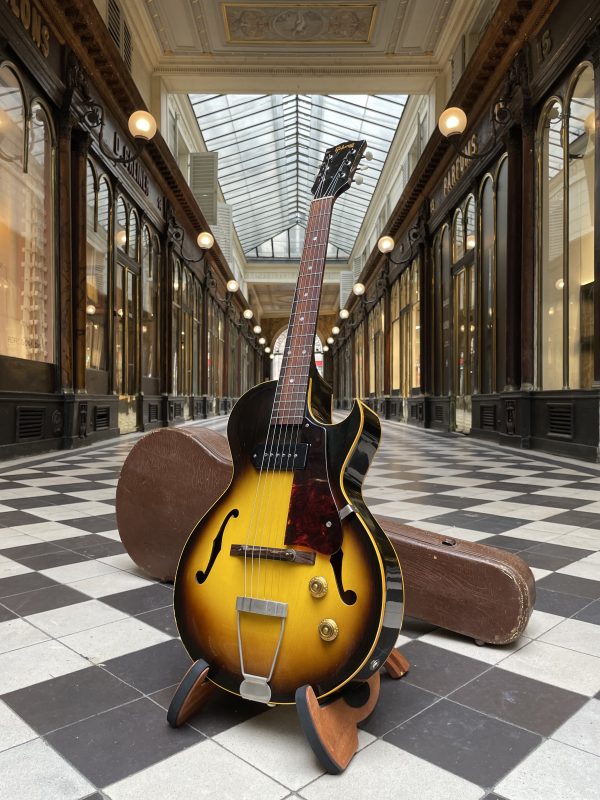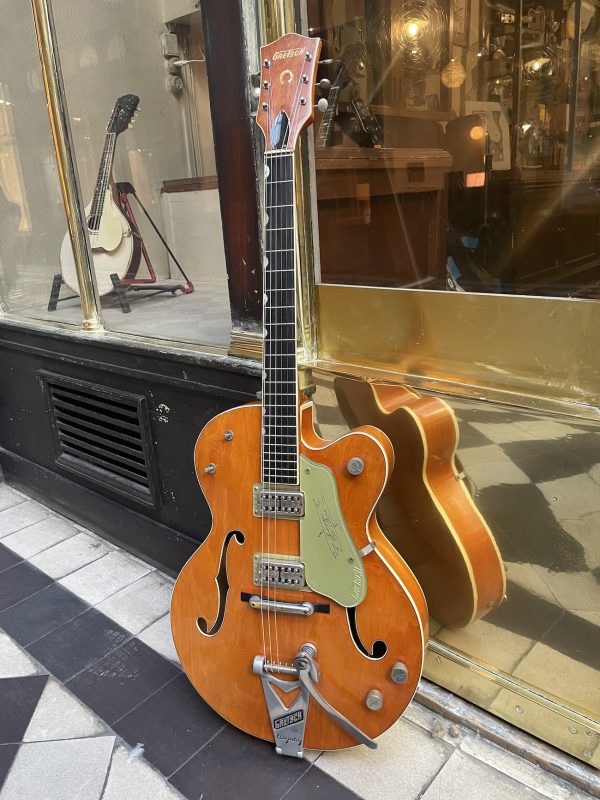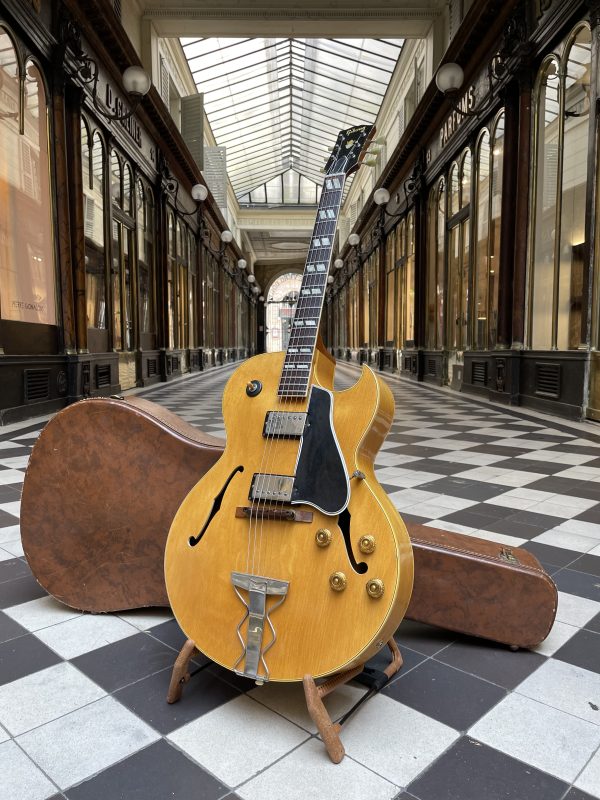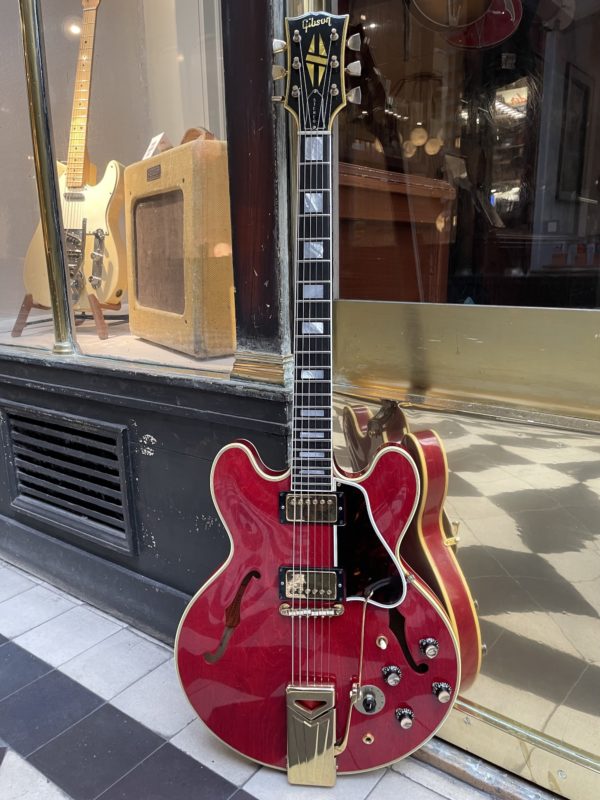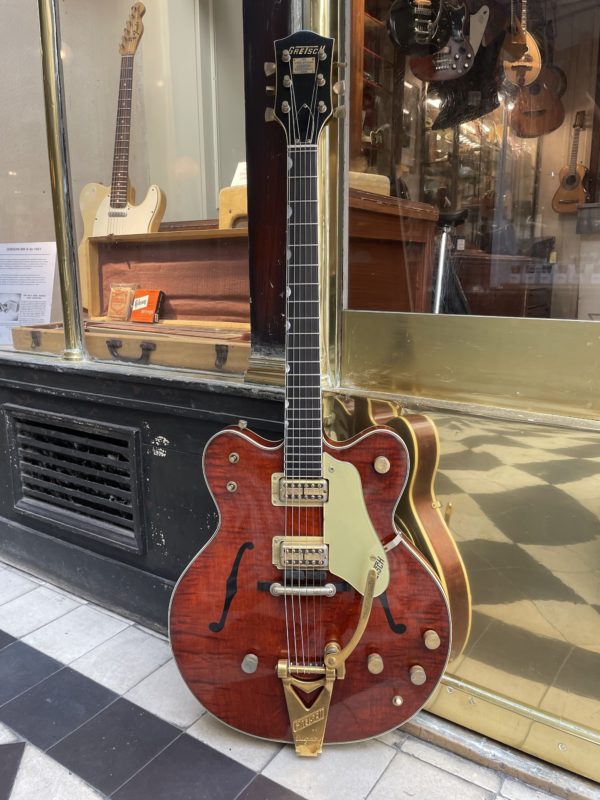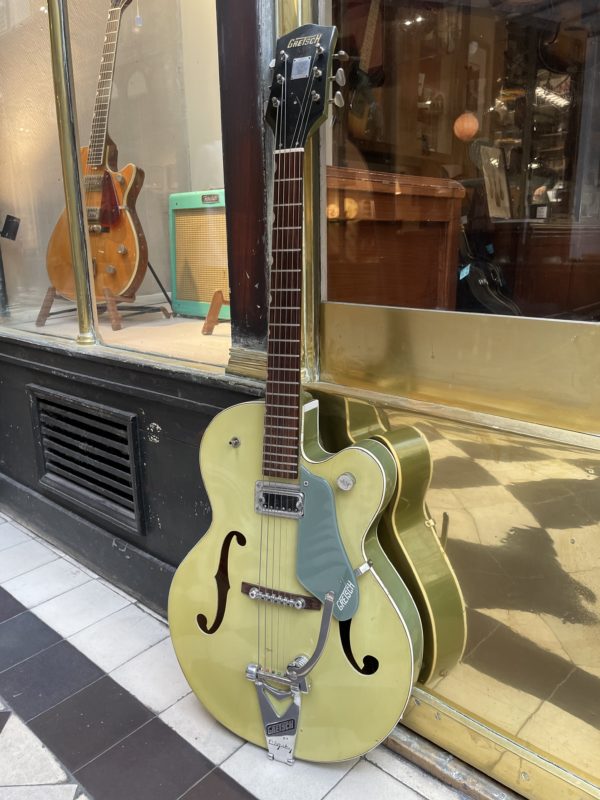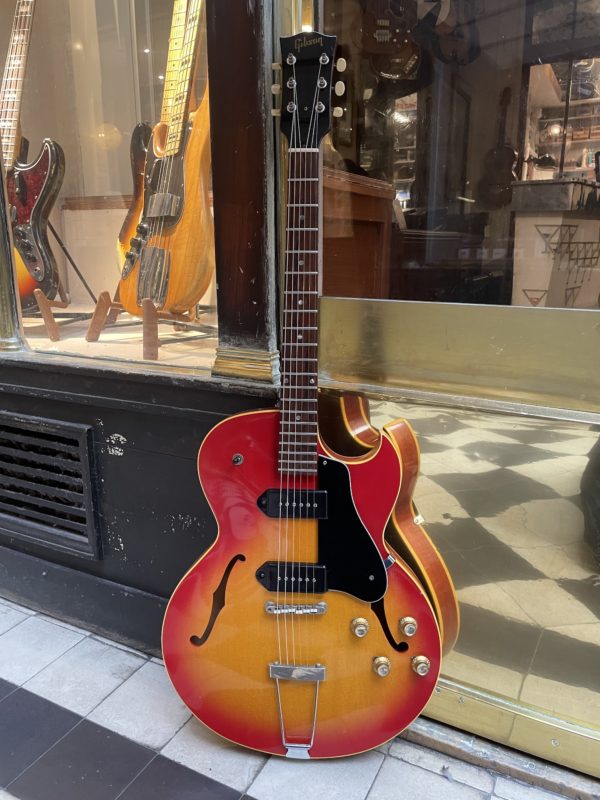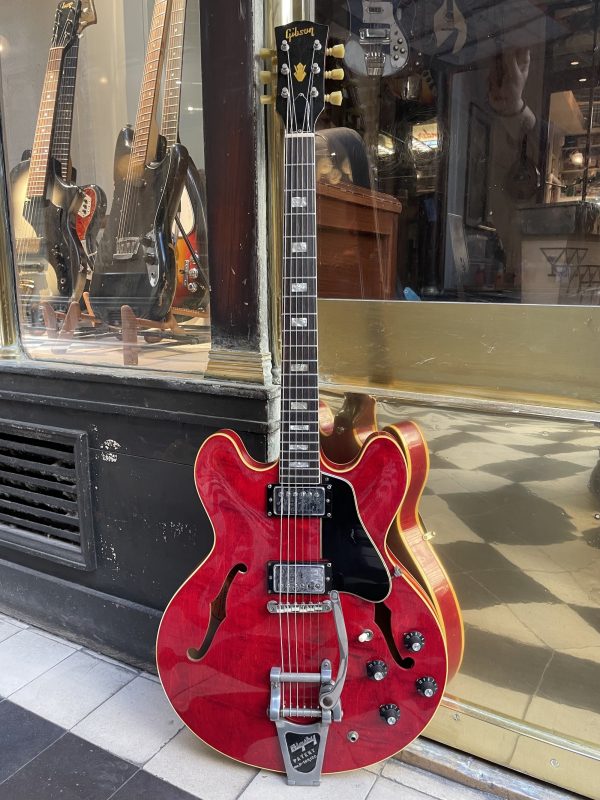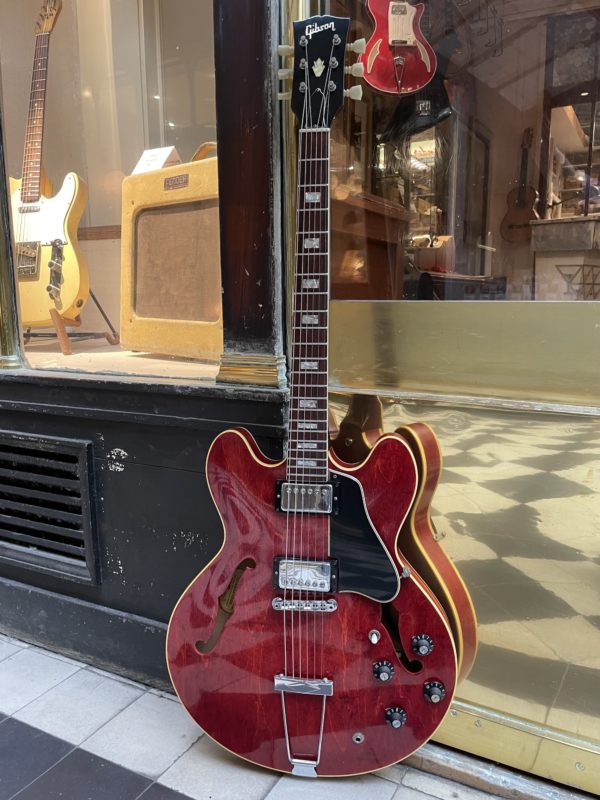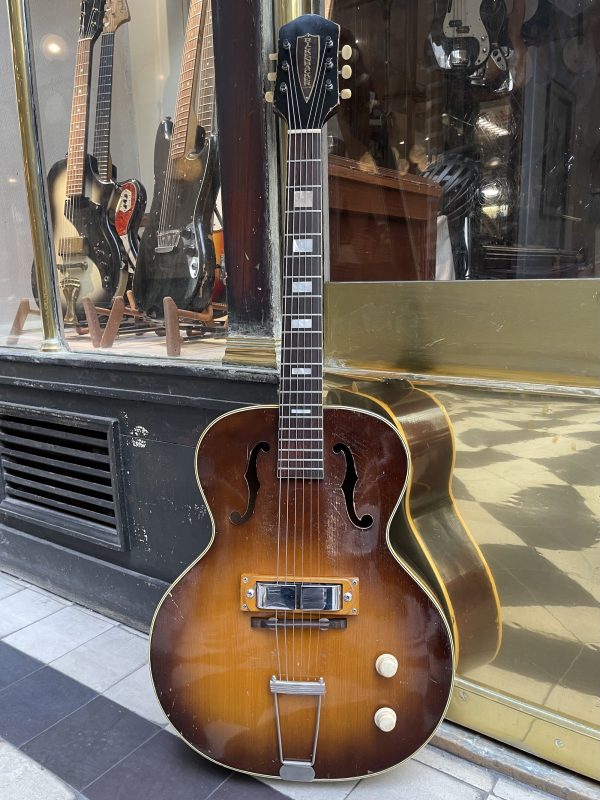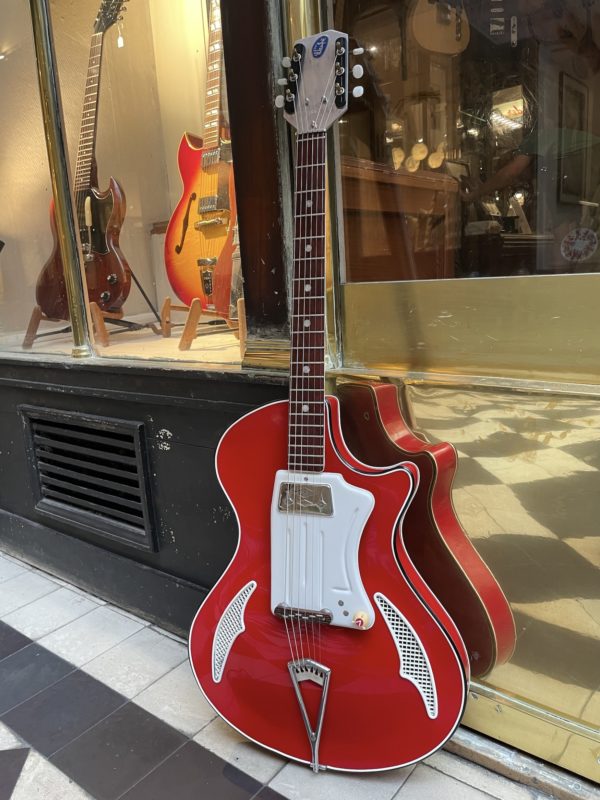Hollowbody
1959 GRETSCH 6120 CHET ATKINS
1960 GIBSON ES-175DN
THE HOLLOWBODY GUITAR
Common usage dictates that we classify as hollowbody guitars all amplified instruments which, unlike the solid body guitar, retain all or part of the body we are accustomed to seeing on acoustic guitars. This body can be more or less deep, with or without a central beam, but can only be effective once plugged into an amplifier.
It’s fair to say that the Gibson ES-150, the first “Spanish” style electric guitar marketed in large numbers as early as 1936, is the mother of all hollowbody guitars. Compared to a strictly acoustic guitar like the Gibson L-50 with an X-bracing, after which the Gibson ES-150 is modeled, the electric model weighed down by its pickup and its admittedly minimal electronics no longer has much sonic projection, so much so that one may struggle to hear it even when accompanying oneself. On the other hand, once connected to an amplifier, it can compete with a saxophone – which is precisely what Charlie Christian (1916-1942) did, and his mastery of his Gibson ES-150 and ES-250 guitars made him king of swing and bebop for a time.
Thus the sound of electric jazz was born and the guitars of this style which followed, in particular Gibsons, were all hollowbody with bodies depths and scale length of varying sizes: Gibson Super 400 CES, Gibson L5 CES, Gibson L4 CES, Gibson ES-175, Gibson ES-5; Gibson ES-125; Gibson ES-225T, Gibson ES-300; Gibson ES-350T, Gibson Switchmaster, Gibson Byrdland, artist models Gibson Barney Kessel, Gibson Tal Farlow, Gibson Trini Lopez, the Gibson Johnny Smith model with a floating pickup on the top, defined the contours of the genre. Whether Gretsch or Guild and their wide range of very successful original hollowbody guitars – the Guild Artist Award model is a paragon of the genre – all are indebted to the creations of the Gibson workshops.
In 1958, Gibson introduced the Gibson ES-335TD model (understand Electric-Spanish, for a cost of US$ 335, Thin body with Double pickups) which included a major innovation: a light, solid wood central beam glued between the top and the back along the whole length of the body of the instrument and which has the double advantage of getting rid of the feedback effect of the hollowbody – like on a solid body in short – all the while keeping a natural resonance in the sound thanks to the two cavities of the guitar on either side of the beam. The best of both worlds in other words! An invention reminiscent of the prototype “Log” invented by Les Paul in 1941: a piece of railroad tie equipped with homemade pickups and attached on either end to two bits of an Epiphone body. The line of Gibson thinline hollow body guitars launched in 1958 borrows mainly from this prototype, more than it does from the Les Paul model itself, which was itself greatly influenced by the directives of Theodore McCarty (1909-2001), head of the Gibson company at the time. Moreover, if we were to describe the subtle difference between a Gibson Les Paul solid body and a Gibson ES-335 thinline hollowbody, we could say that the first is the perfume and the second the eau de toilette, or even the pure versus diluted essential oil. All in all, the compression of the bass range and the brightness of the high end on a thinline hollow body bring out a well balanced midrange.
Also, faced with the more than relative success of the Gibson Les Paul and its soon-to-be effective failure at the very beginning of the 1960s (the model would only come back into fashion thanks to the blues boom of the late 1960s), Gibson therefore released in 1958 an entire range of these hybrid guitars between hollowbody and solid body: Gibson ES-335 then Gibson ES-345 and Gibson ES-355 with stereo wiring, and finally, seeing the great success of this type of Gibson puts on the market an economic model with the same general appearance, the Gibson ES-330, which in its first versions does not have a central beam and just returns it to a thinline hollowbody such as the Gibson ES-125T or Gibson ES-225T !
The great versatility of these semi-hollowbody guitars, their light weight compared to solid body guitars, and also beautiful symmetrical aesthetics with their double cutaways, have made them the instrument of choice for electric bluesmen whose image cannot part with them. All of them, so to speak, have played and still play a semi-hollowbody model from Gibson, Epiphone or Guild, and the Japanese Ibanez, Greco or Yamaha, to name a few, or the Germans Framus and Höfner, will also excessively copy these prestigious models.
The blues guitar is therefore very often a semi-hollowbody: whether it be BB King (1925-1915)’s infamous « Lucille », Freddie King (1934-1976 ), Magic Sam (1937-1969) Otis Rush (1935-1918), John Lee Hooker (1917-2001), Buster Benton (1932-1993), Jimmy Dawkins (1936-2013), Fenton Robinson (1935- 1997), Mighty Joe Young (1927-1999), but also in the world of rock’n’roll Chuck Berry (1926-2017) of course, and Eric Clapton (1945) or Alvin Lee (1944-2013), in jazz-rock Larry Carlton (1948), Robben Ford (1951-), Lee Ritenour (1952), John Scofield (1951), the electric Bireli Lagrène (1966) and the cohort of their students, disciples, heirs, successors, plagiarists or imitators – all of the above have had their slice of the hollowbody pie.
In conclusion, we can report here an opinion shared by a large number of seasoned musicians who state that to face any eventuality during professional sessions in the studio, two electric guitars are essential: a Fender Telecaster for the solid body and a Gibson ES-335 semi-hollowbody and voila: “with this, we can do anything!”
